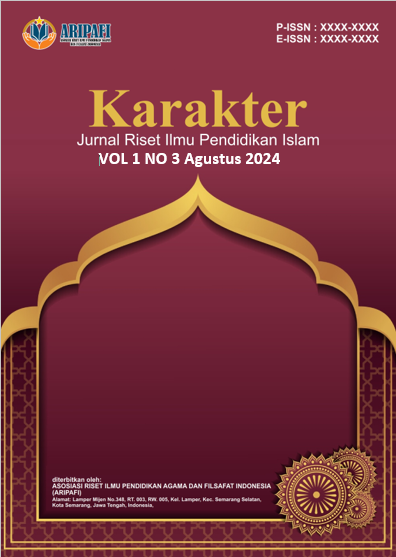Perspektif Al-Qur’an tentang Sel Saraf dalam Kajian Integrasi Agama dan Sains
DOI:
https://doi.org/10.61132/karakter.v1i3.7Keywords:
Al-Qur'an, Frontal Lobe, Integration, Science, NerveAbstract
The Al-Qur'an is one of the sources of knowledge that has absolute truth. This source of knowledge does not only focus on knowledge about worship and muamalah, but also on scientific insights, namely scientific facts. These scientific cues are found in the verses of the Qur'an which are scattered throughout the surah and are referred to as kauniyah verses. One of the scientific signs explained in the Qur'an is about nerve cells. There are six verses spread across three suras in the Al-Qur'an with an indirect pattern of conveying information so that it requires further study to understand the meaning and scientific signals. The word "naashiyah" contained in the six verses means forelock, it is stated that the forelock is a guarantee for responsibility for dishonorable actions or wrongdoing. Scientific facts about the crown is the part of the front brain that functions as a controller, memory and decision maker, which is called the frontal lobe. The information from these six verses is true that the crown is the place where decisions are made and is the measuring point for the right or wrong decisions taken. Therefore, information from the Koran and scientific facts from research results are integrated with each other and show harmony.
References
Amin, W. A. (2018). Hubungan ilmu pengetahuan dan moralitas: Analisis problem dan tanggung jawab keilmuan. TSAQAFAH Jurnal Peradaban Islam, 14.
Barbour, I. G. (2000). When science meets religion. Harper San Francisco.
Bird, T. (1998). Memory loss and dementia. Hill McGraw-Hill.
Bordal, P. (2010). The central nervous system. Oxford University Press.
Hoffman, M. (2013). The human frontal lobes and frontal network systems: An evolutionary, clinical, and treatment perspective. ISRN Neurology, 2013.
Koesoemah, & Dwiastuti. (2017). Histologi dan anatomi fisiologi manusia. BPPSDMK.
Miller, E. K., et al. (2002). The prefrontal cortex: Categories, concepts, and cognition. Philosophical Transactions of the Royal Society B: Biological Sciences, 357, 1123-1136.
Purwanto, A. (2012). Nalar ayat-ayat semesta. Mizan.
Santi, S. (2018). Relasi agama dan sains menurut Sayyed Hossein Nasr dan Ian G Barbour. Prosiding Integrasi Interkoneksi Islam dan Sains. Yogyakarta, 7 Mei 2018.
Shihab, M. Q. (2002). Tafsir Al-Mishbah. Lentera Hati.
Supriyadi, A. (2018). Kosmologi Islam: Agama dalam kemelut sains. Prosiding Integrasi Interkoneksi Islam dan Sains. Yogyakarta, 7 Mei 2018.
Syakir, S. A. (2014). Mukhtashar Tafsir Ibnu Katsir Jilid 6. Darus Sunnah.
Tekieh, et al. (2017). What is thought: Take a look at the Holy Quran and the principles of neuroscience. Iranian Red Crescent Medical Journal, 2017.
Watson. (2015). Hubungan sains dan agama: Refleksi filosofis atas pemikiran Ian G Barbour. Profetika Jurnal Studi Islam, 1.






